Physical Address
304 North Cardinal St.
Dorchester Center, MA 02124
Although arthroscopic rotator cuff repair has largely replaced traditional open surgery for the treatment of a symptomatic full-thickness rotator cuff tear, the optimal repair technique is still a matter of debate. Although the modern double-row repair techniques have been recommended to increase the coverage of the tendon–bone junction and thus enhance healing of the tendon–bone interface, a superior method regarding the clinical outcome and the retear rate has yet to be found. As suture cut-through is a major concern, especially with the single-row repair techniques applied in cases with poor tendon quality, the self-locking modified Mason-Allen suture grasping technique has become effective for arthroscopic usage ( Fig. 19.1 ). This modified repair technique is reported to be biomechanically superior to other single-row techniques and as stable as double-row configurations. At the same time, it is believed to reduce the risk of tendon strangulation compared with the double-row repair. Finally, this technique for single-row suture anchor repair is a more cost-effective repair technique than the double-row technique. We prefer using the modified Mason-Allen suture grasping technique in small superior or posterosuperior crescent-shaped rotator cuff tears.
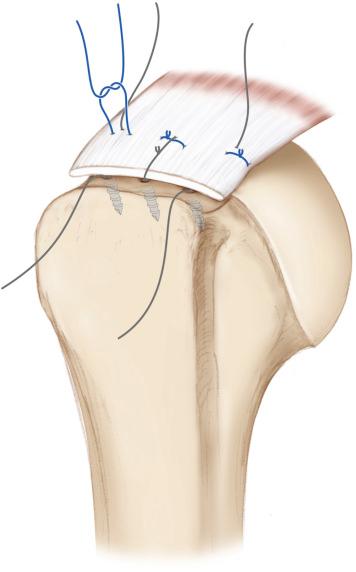
The modified Mason-Allen suture grasping technique for arthroscopic single-row suture anchor repair is a combination of a mattress and single suture, offering a configuration that applies a constant and balanced contact pressure to the tendon-bone interface. After placing the anchor midway into the prepared footprint, a mattress stitch is performed followed by a perpendicular single stitch, creating an interlocking cross-shaped suture configuration ( Fig. 19.2 ).
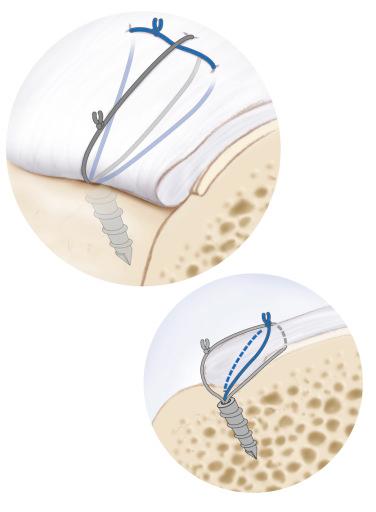
A detailed patient history including the patient’s age, type of occupation and sports activity, onset of shoulder disorder, duration of symptoms, and medical condition is important in order to establish the diagnosis of rotator cuff tear.
The age of the patient will provide a cue for determining the diagnosis because the prevalence of a rotator cuff tear is closely age-dependent.
It is important to distinguish between acute traumatic and chronic degenerative rotator cuff tears as well as to consider the possibility of trauma involvement.
The patient will complain of pain and weakness in the shoulder resulting in functional impairment. A gradual onset of shoulder impairment, particularly during manual activities, is suspicious of a degenerative rotator cuff tear.
The pain quality is described as a sharp pain around the front of the shoulder that worsens during overhead activities. Nocturnal pain in the shoulder has only limited diagnostic value.
Additionally, the patient is limited in overhead work due to progressive loss of strength and range of motion.
The clinical examination should always include inspection and palpation, assessment of active and passive range of motion and strength, as well as functional shoulder testing. Remember to compare the affected extremity with the nonaffected extremity.
Atrophy of the supraspinatus or infraspinatus could suggest a chronic rotator cuff tear.
Isolated limitation on active range of motion is due to either true weakness or weakness caused by pain. Passive range of motion is mostly preserved and not necessarily painful.
Rotator cuff strength, including resisted elevation and external and internal rotation, should be evaluated with manual muscle testing. A loss of strength is best determined when compared with the nonaffected shoulder.
Functional shoulder testing allows for a more specific diagnosis. We prefer the empty can and full can test to evaluate the supraspinatus muscle ( Fig. 19.3 ). If positive, a tear of the supraspinatus tendon is suspected. Involvement of the infraspinatus tendon should be evaluated using the external rotation resistance test along with the external rotation lag sign ( Fig. 19.4 ). A positive hornblower’s sign may indicate additional teres minor dysfunction.
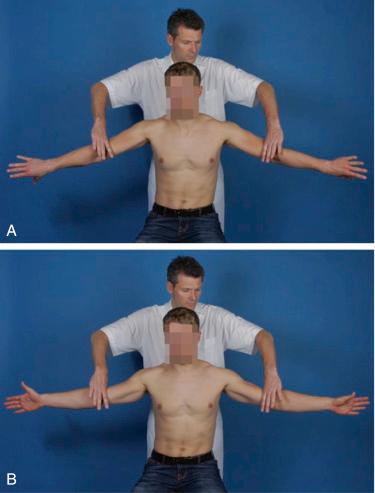
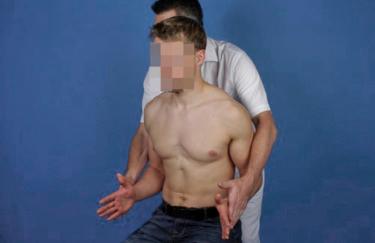
Use as few examinations as necessary, but as many as needed, to reveal the correct diagnosis.
Conventional radiography is the first method of imaging in patients with shoulder disorders. In the case of a small full-thickness rotator cuff tear, radiography may not reveal anything abnormal. An excessive lateral extent of the acromion defined by either the acromion index ( Fig. 19.5 ) or the critical shoulder angle ( Fig. 19.6 ) on the anteroposterior view may predict a rotator cuff tear. An upward migration of the humeral head combined with osseous changes of the greater tuberosity and the inferior surface of the acromion may reveal tear chronicity and size.
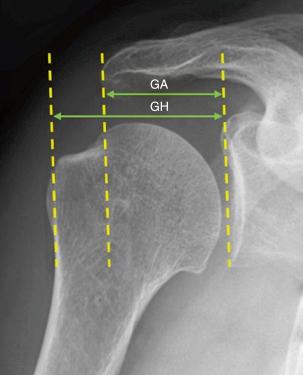
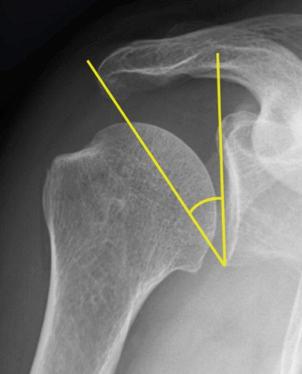
Ultrasound is a valuable tool to dynamically assess the rotator cuff. Although sensitivity and specificity are high in diagnosing a full-thickness cuff tear, the accuracy is strongly user-dependent. The tear is distinctively marked by tendon volume loss and focal nonvisualization with fluid-filled spaces ( Fig. 19.7 ).
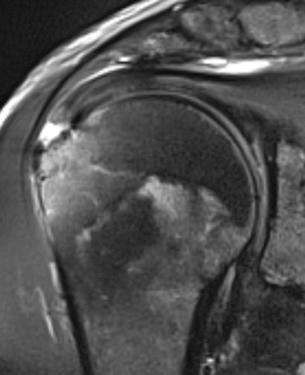
The gold standard in diagnosing a rotator cuff tear is magnetic resonance imaging. Both tendon and muscle quality may be evaluated, which helps improve preoperative planning. The reparability of the tendon is assessed by evaluating tear size, tendon retraction, fatty infiltration, and atrophy of the muscle ( Fig. 19.8 ).
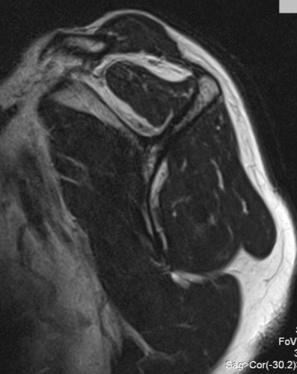
Computed tomography arthrography can be used for evaluation of the rotator cuff in patients with a pacemaker or claustrophobia. A benefit is the direct assessment of bone quality, which is useful in the elderly.
Small degenerative supraspinatus tendon tears in elderly patients or partial rotator cuff tendon tears do not necessarily require surgical treatment. Physical therapy along with pain medication may be suggested in order to relieve pain and restore function on a long-term basis. Failure of conservative treatment is an indication for surgical management.
Rotator cuff debridement can be a treatment option in either superficial partial-thickness tear or irreparable rotator cuff tears if conservative treatment was unsuccessful.
A partial rotator cuff repair is recommended to restore the transverse force couple in a massive tear with irreparable supraspinatus tendon.
Rotator cuff repair is recommended in young patients with full-thickness tears.
A diagnostic evaluation of the glenohumeral joint and the subacromial space are essential in order to recognize and understand the tear pattern.
Examination of the glenohumeral joint should always include the long head of the biceps tendon and the pulley system, the subscapularis tendon, the articular side of the supraspinatus and the infraspinatus tendon, and the articular surface of both the humeral head and the glenoid. The order of procedure should always be the same.
An accurate subacromial bursectomy should be performed in order to have good visualization of the inferior part of the acromion, the surface of the tendon, and the former tendon footprint on the greater tuberosity.
Surgical treatment is strongly based on the clinical and radiologic examination as well as patient-specific general health condition, functional demands, degree of pain, and level of impairment.
Acute traumatic tendon tears should be repaired surgically within a few weeks in young as well as in elderly patients.
Chronic degenerative rotator cuff tears in younger patients should be treated surgically.
Chronic degenerative rotator cuff tears in elderly patients should be treated surgically if conservative treatment fails.
Tear progression or tendon retraction are additional reasons to perform an early surgical intervention in order to ensure reparability.
The therapeutic regimen needs to be adapted in all cases based on patient-specific factors.
We prefer placing the patient in the beach chair position with approximately 60 degrees of upper body inclination. The use of a shoulder-specific operating table is recommended with the possibility to free the posterior aspect of the shoulder and place the head in a retainer that ensures a neutral neck position ( Fig. 19.9 ).
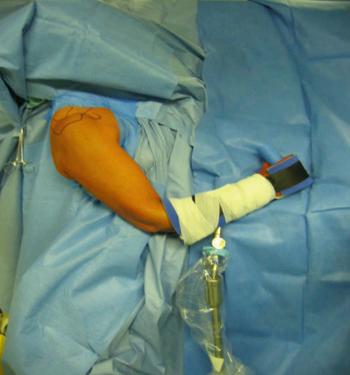
The affected arm is mounted on a pneumatic arm positioner, which assists in holding a constant arm position along with additional glenohumeral and subacromial distraction.
With the surgeon standing close to the head of the patient on the ipsilateral side, the arthroscopic tower should be placed at the feet of the patient directly opposite the surgeon.
The scrub nurse and the instruments are placed on the ipsilateral side, and the anesthesiology equipment is placed on the contralateral side of the patient.
Use a head retainer device to ensure safe positioning and reduce the risk of postoperative neck problems.
If patient comorbidities allow it, mean arterial blood pressure should be maintained at approximately 60–70 mm Hg to improve visualization.
Care must be taken to avoid unnatural patient positioning or excessive traction on the arm in order to avoid stretching of the brachial plexus.
Become a Clinical Tree membership for Full access and enjoy Unlimited articles
If you are a member. Log in here